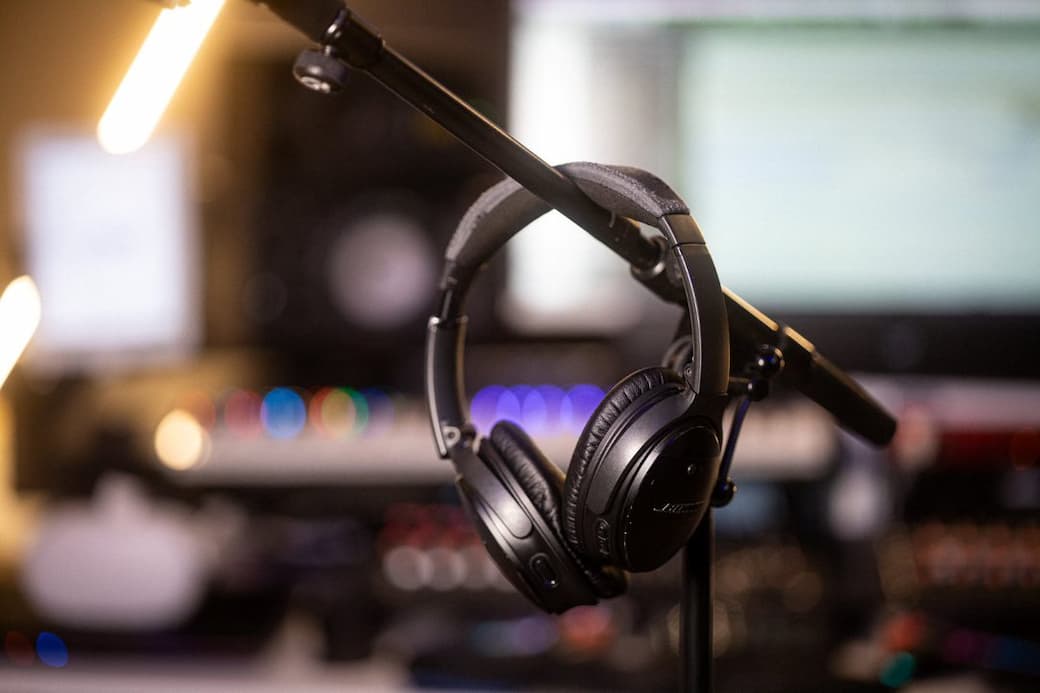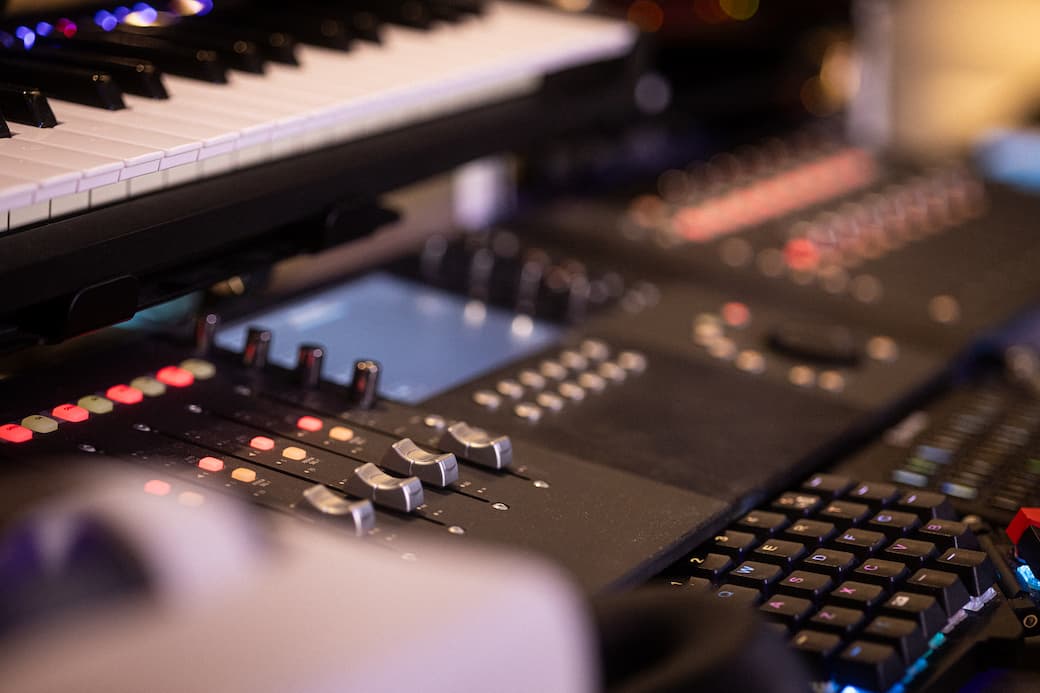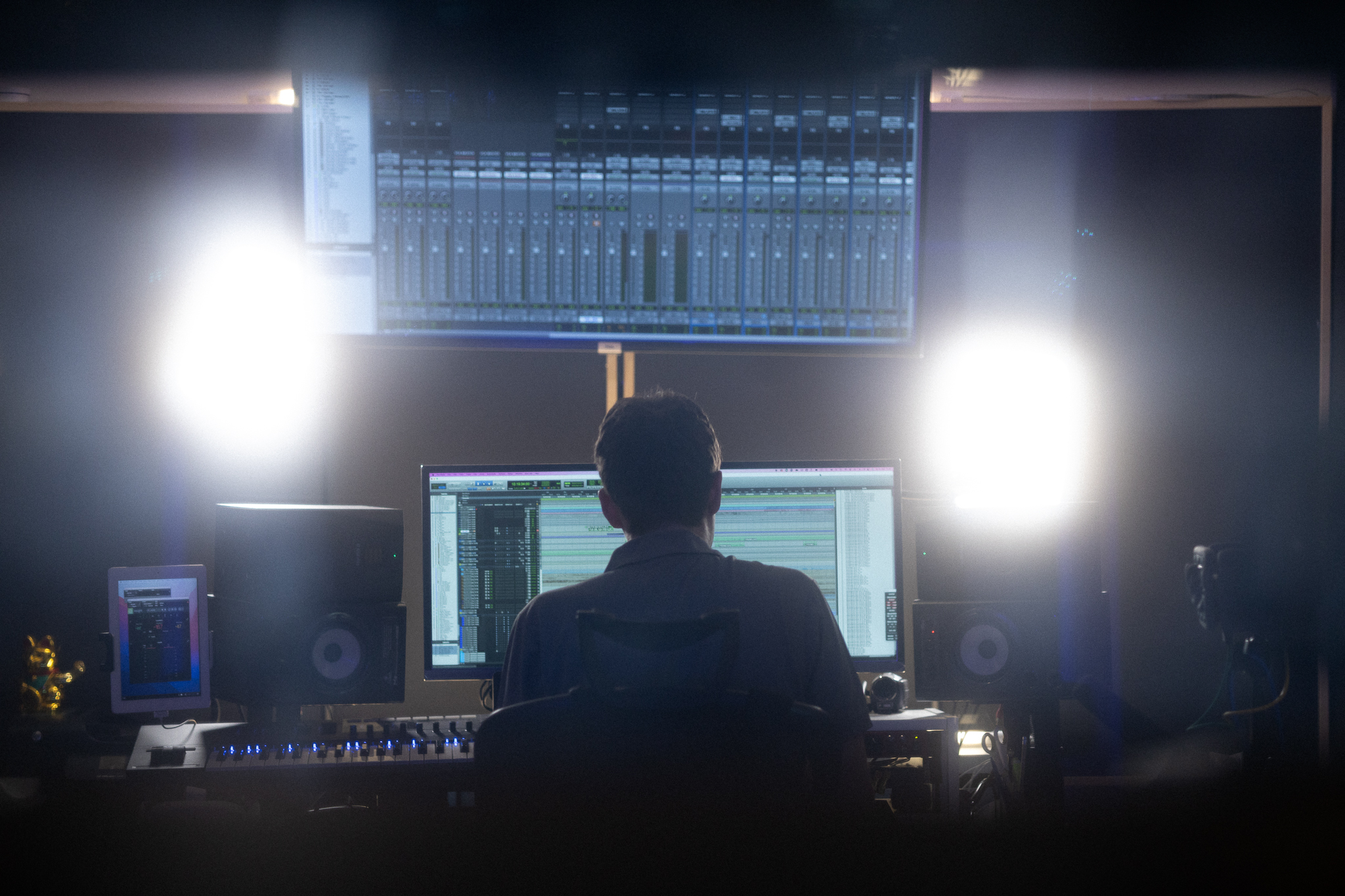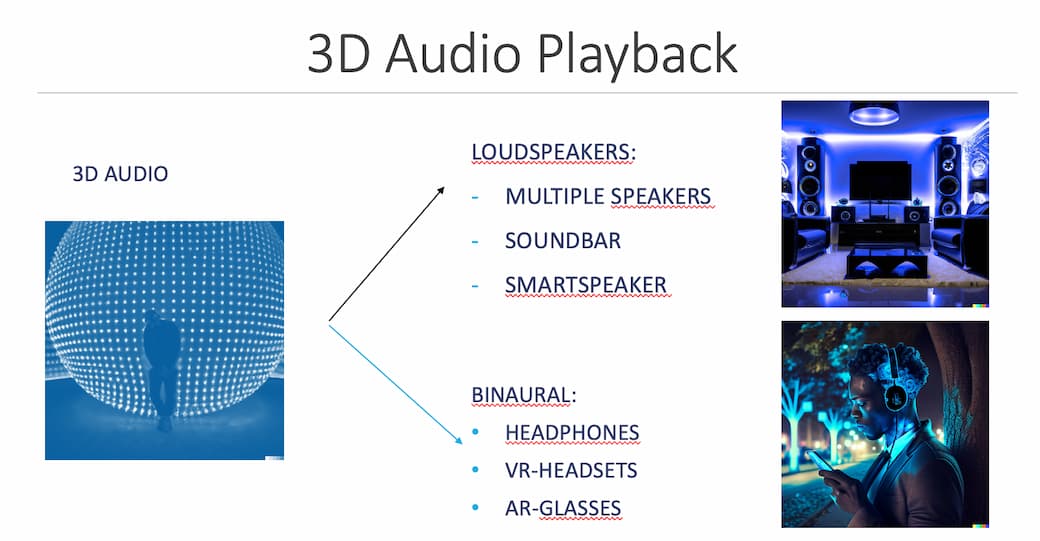
VRTonung learning – THE spatial audio course for immersive media
Content
In recent years, the importance of spatial audio in immersive media has increased rapidly in various industries. However, most sound engineers still usually talk about “immersive and spatial audio”, but only mean “3D music production”.
Immersive music is legitimate if done well, but in my perception, it is only a small piece of the immersive media puzzle – and one with comparatively little potential. So let’s look at where there are far more possibilities for spatial sound.
Before I reveal what I mean by that, let’s take a look at the job description of immersive media designers. You will get a thorough introduction and learn how diverse and life-changing this industry can be.
Designers of immersive media
For those of you who didn’t see my post in the Audio Engineering Society (AES) last year, here’s the short version:
Immersive media designers are responsible for the audiovisual design of XR content, which includes many visual as well as auditory aspects.
This professional field has become increasingly important as immersive media applications in areas such as augmented reality and virtual reality – or spatial computing, as Apple calls it – are on the rise. As an expert, I have been closely involved in defining the content over the last few years.
The importance of audio in the field of immersive media design, compared to image, video and sound media design, is about 10-20%, instead of 40-50%.

I do not consider the immersive media engineers to be complete audio producers, as the required knowledge and skills cannot be taught completely within a limited time frame due to their complexity. It was much more important to convey the importance of good sound design.
Therefore, it was important to me to create something to increase the appreciation of audio quality in media production, rather than replacing sound creators with an immersive all-in-one device.
The training in this field integrates various skills such as consulting, conceptualization, design, and programming with a focus on audiovisual design of XR content.
In this industry, it is crucial that both sound engineers and non-sound experts understand why audio is so essential to media production. 3D audio plays a key role in the user experience (UX) and storytelling of XR content.
There are now plenty of documents available on the website of the Federal Institute for Vocational Education and Training (German: BIBB), such as the framework curriculum on content:
https://www.bibb.de/dienst/berufesuche/de/index_berufesuche.php/profile/apprenticeship/gestim23
Content structure: Modules and fields
However, we want to pay special attention to audio production. The training lasts 36 months and the first year is quite similar to the media designer for image and sound. This lays the foundations.
There are 11 module fields, all of which follow the following pattern. Here is an example of our favorite “Module field 7 – Realizing sound worlds”.
In this course, students learn to plan, implement, and evaluate sound productions for digital realities in accordance with customer requirements.
They analyze the orders and make decisions regarding the technical and content-related implementation, also taking into account legal characteristics.
In addition, they select the equipment and software required, including in the area of 3D production, and work in communication with other participants, including in German and in a foreign language.
Students are responsible for the entire production process, including the handling to capture spatial audio, post-production in digital audio workstation and quality control.
They present the results to clients, take feedback and make necessary adjustments to the playback before exporting the final sound products according to the technical requirements for the desired uses.
In addition, they reflect on their work process to improve their teamwork and save all relevant project data, taking into account economic and organizational factors.
Of course, it all sounds very theoretical at first, but in practice, it can be quite a beautiful application.
For example in the audio production of a radio play. Or when adding sound to a finished 3D room, such as a virtual zoo. Of course, it’s not enough to just think about the sound.
That’s why you’ll learn the basic techniques of sound to reproduction again and again in the other modules. For example, how sound can be used for storytelling or which format is best suited for which immersive medium.
Thinking outside the immersive box
I studied media technology and production for over 10 semesters at Bachelor’s and Master’s level, including an internship semester.
During my studies, I attended a variety of courses full of lectures on physics, acoustics, digital signal processing, audio applications, psychoacoustics, etc.

At the same time, however, I also took exams on visual 3D models, video content and computer science courses.
This broad education made it easier for me to explore and specialize in the field of immersive 3D audio. In contrast, conventional sound engineers, for example from the SAE Institute, often have difficulties taking their first steps in this field, as pure audio expertise is not enough.
For projects in the field of sound spatialization of immersive media, knowledge of game engines and programming is usually indispensable.
3D Learn audio the right way
What sets me apart is a very diverse portfolio. I have worked with virtually every immersive technology, have advised a number of industries, and provided them with the right audio production and techniques.
Now I have been commissioned to take over the training of vocational school teachers throughout Germany.
There is currently hardly any teaching material available, only a few tutorials. There is also some course information, very specific literature, and course information but it is far from the actual learning fields.
But it’s not that bad, the necessary knowledge is already buzzing around in my head or blog anyway. That’s why I sorted through all the basics and expanded them where I couldn’t get any further with stereo sound.
The result is a 3D audio video course that has already been tested on screen with over 20 teachers and was very well received.

I can say that quite unique concepts and techniques have emerged from this that can be applied to all immersive media.
The 3D Audio Matrix
I couldn’t think of a better name, so that’s what it’s called now. I was looking for a way to put the whole world of immersive media from music, movies, podcasts, 360 videos, head tracking, games, AR/VR/XR/Metaverse/Spatial Computing into one overview platform.
This structure is probably the only one that takes into account the levels of freedom for each medium. All overviews that advertise “what you need to know about 3D audio” only take into account: mono, stereo, surround, object-based 3D audio and, at best, ambisonics.
For me, however, the dimensions go further and only then become really exciting. For example, when the listener doesn’t just look straightforward.
I also take into account the differences and similarities when using headphones and speakers. Most sound design is mixed on loudspeaker technology with the expectation for the magic “binauralize” button to do all the work.

After more than half a decade of full-time experience with binaural audio, I can promise you that it doesn’t work that way if you want to do it well. In addition, headphones enable access to many mix elements that cannot be realized with loudspeakers.
Learn 3D Audio the right way
During my courses, I give participants an introduction and insight into various industries and use cases, including marketing, automotive and medicine. I present spatial audio with examples to make the learning content tangible and explore the practical benefits of immersive.
Many mixes and speakers you hear now say “spatial audio”, but how do I know if it’s good or better than 2D stereo?
A key lesson I teach is that a basic understanding of concepts and principles is more important than simply mastering tools. My approach is to introduce ways of thinking that structure the topic of immersive audio in a completely new way and thus lay the foundation for becoming a producer yourself.
Learning 3D audio – the spatial audio course for 3D mix
I don’t think much of introducing just any tools because they age quickly and there is no plugin that meets all requirements anyway. Of course, you will see Reaper, ProTools, real-time engines like Unity etc.
Instead, my approach is dynamic, and new videos are always being added – depending on the demand.
Of course, there are also practical submissions based on testing one project or another under real conditions. There are also individual and group coaching and discussion sessions in which I answer users’ questions or provide feedback.
I know that some people want to know more how to record Dolby Atmos in Logic but encoding such binaural sounds is just not for everybody.
The course is currently being made available to various educational institutions. The vision is to build a system that enables education at the highest level regardless of location and can sustain itself. The next step will therefore be to add modules to the course.
That is why I have brought the leading audio engineers of well-known musicians on board for the first focus on 3D music production.
Further focuses are planned, such as immersive Dolby Atmos films, podcasts, live sound, full-dome, 360 film, AR, VR etc., etc. Anyone who would like to contribute and has the necessary expertise is welcome to get in touch!
Future of immersive audio learning
For more information and questions, simply go to my website vrtonung.de, and apply for a free initial consultation if you are interested in the course made in Munich.
We will clarify whether the course will take you to the next level and what entry opportunities you have in the industry (with daily rates that are well above average).
Thanks to Vanessa Strobel, who didactically prepared the implementation and surveys with quizzes in the form of her Master’s thesis. This is just the foundation, but with this environment, we will shape the future of immersive spatial audio course.
learn more hereRelated Articles
3D Audio - the immersive spatial soundtrack from all directions
3D Spatial Audio Wiki: A call to the community for glossary
“Immersive Audio” is More Than Just “3D Music”
Martin Rieger (VRTonung) - Interview VDT-Magazin
Martin Rieger, 3D Audio expert committing his life to immersive experience